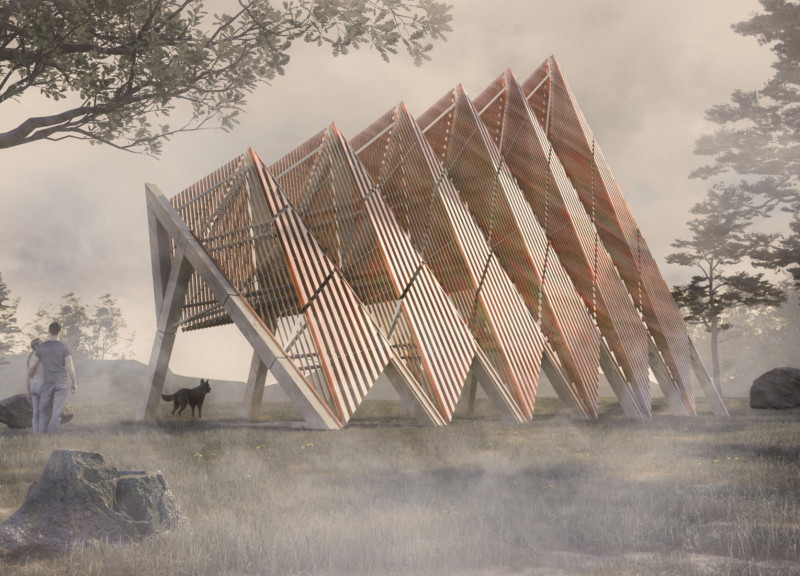5 key facts about this project
The pavilion's design features a modular approach, allowing it to adapt to various sites and serve diverse purposes. Its open internal layout supports flexibility, enabling a range of activities from communal gatherings to individual reflection. The architectural layout is intentionally designed to facilitate interaction with the surrounding landscape, enhancing user experience while promoting a connection to nature.
Unique Design Approaches
One of the standout features of the Timber Pavilion is its integration of slatted timber louvers across the facade. These elements not only provide natural ventilation but also create dynamic visual patterns as light filters through. The design employs a sustainable approach by utilizing local timber, reinforcing regional identity while minimizing environmental impact. The pavilion's elevation above ground level promotes biodiversity, allowing local flora and fauna to flourish beneath its structure, which in turn creates an educational opportunity regarding local ecosystems.
The sloping roof design enhances the aesthetic quality of the pavilion while functioning as a rainwater collection surface. This feature showcases the architectural intent to incorporate elements that serve both functional and ecological purposes. Each aspect of the design, from the arcane bracing to the structural framing, is crafted to ensure durability while maintaining a light and airy atmosphere.
Environmental Integration
The Timber Pavilion's placement and orientation consider seasonal variations in sunlight and wind, optimizing natural light use and thermal comfort. The adjustable fidget louvers allow users to control the amount of sunlight entering the space, enhancing usability throughout the day. This attention to environmental responsiveness sets the pavilion apart, demonstrating how architecture can adapt to and respect its ecological context.
To gain deeper insights into the Timber Pavilion, it is encouraged to explore the architectural plans, architectural sections, and architectural designs presented in detail. These resources will provide a comprehensive understanding of the project and its contributions to architectural ideas focused on sustainability and design innovation.























